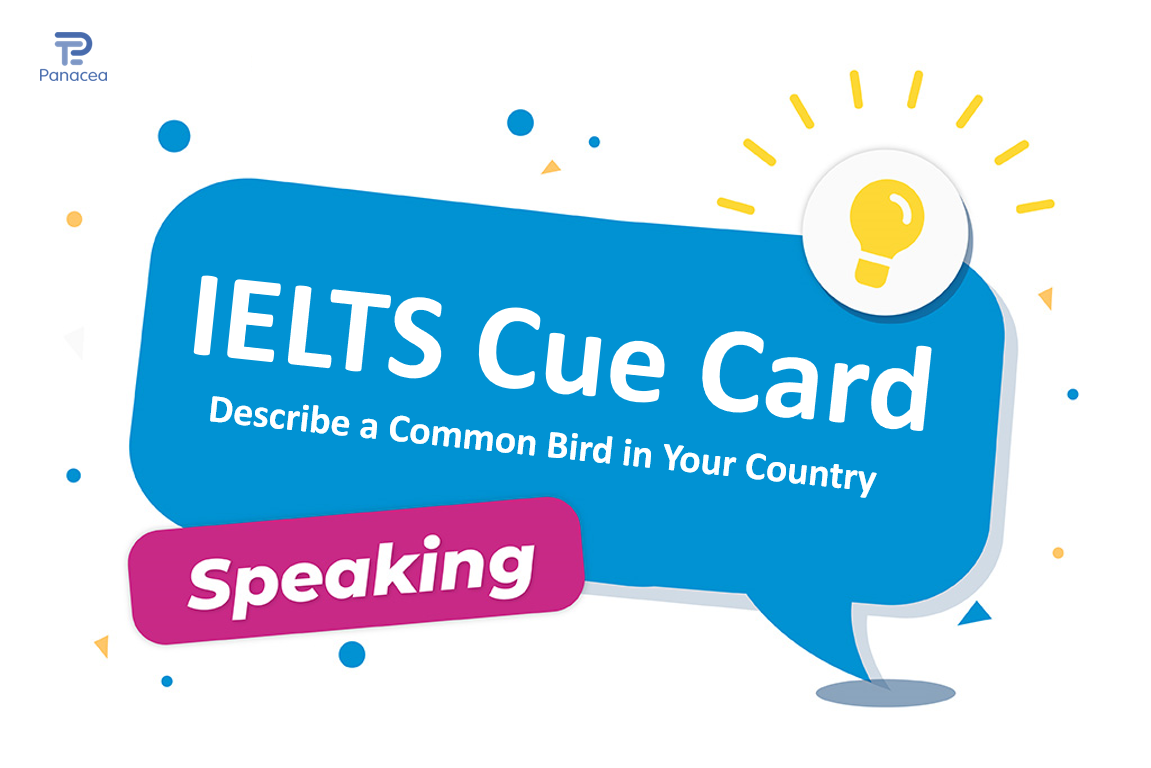Describe a Common Bird in Your Country
Learn how to answer the IELTS Speaking Part 2 cue card topic "Describe a Common Bird in Your Country" with model answers on the Indian Myna and Black Drongo.

Learn how to answer the IELTS Speaking Part 2 cue card topic "Describe a Common Bird in Your Country" with model answers on the Indian Myna and Black Drongo.
The IELTS Speaking test has three parts: an introduction, a cue card section, and a discussion. In Part 2, you’ll get a topic on a cue card and a minute to prepare before speaking for up to two minutes. One of the common topics is “Describe a common bird in your country.”
Now, I know discussing birds may not interest everyone, but believe me—once you begin noticing, you see how interesting they are. Let's break it down and see some tips to answer this cue card naturally.
You should say:
· What bird is it?
· How does it look?
· Where can you see it?
· Why do you enjoy it?
· What makes it special?
Model Answer 1: The Indian Myna
Introduction
So, let's discuss a bird that virtually every Indian has spotted—the Indian Myna. It's one of those birds you don't even need to search for. They're just… everywhere. And really, I sort of respect their hustle!
What bird is it?
The Indian Myna, or Common Myna, is a tiny but incredibly intelligent bird. It belongs to the starling family and is ridiculously adaptable.
How does it look?
It has brown and black feathers, with bright yellow legs, beak, and eye patches that make it easily recognizable. And when it flies, you can see white patches on its wings.
Where can you see it?
Where can't you spot it? Cities, villages, parks, your balcony—it's literally everywhere. You'll spot them leaping around markets, perched on electric wires, or rummaging through gardens for food. They're not shy whatsoever and are always getting up to something.
Why do you enjoy it?
What I like best about the Indian Myna is its ability to mimic. These birds have the capacity to mimic sounds, and at times, they even mimic humans! And they have this playful, talkative nature. They're the gossips of the bird species, always chattering and dealing with one another.
What makes it special?
Their brains are what make them truly special. Mynas are able to recognize faces, learn how to open things, and even work in teams to steal food—very impressive for a bird!
Conclusion
The Indian Myna might be ordinary, but that's what makes it so fascinating. It's a great illustration of how nature adapts and finds ways to survive, even in large, crazy cities.
Model Answer 2: The Black Drongo
Introduction
Let's discuss about a small but tough bird—the Black Drongo. It's like the dashing warrior of the bird kingdom.
What bird is it?
Black Drongo is a black bird with a glossy appearance and is well known for its bold nature. It is not very large in size, but when it comes to attitude, it has more than enough.
How does it look?
Imagine a lean, jet-black bird with a long, split tail and piercing red eyes. It's rather elegant, but it also appears to mean business.
Where can you see it?
They prefer open country, so you'll typically find them in fields, farms, and parks. They enjoy sitting on wires or fence posts, watching for insects to catch in flight.
Why do you like it?
I personally appreciate so much this bird's courage. Although it's tiny, it doesn't hesitate to attack larger birds such as crows or even hawks if they approach its nest. Talk about being bold!
What makes it special?
Aside from its braveness, the Black Drongo is a great insectivore. It catches insects in mid-air with amazing accuracy. Moreover, farmers adore it as it naturally manages pest populations.
Conclusion
The Black Drongo may not be as showy as some other birds, but its braveness and aggressive hunting ability render it one of the coolest birds in my eyes.
1. Is bird-watching a worthwhile activity or simply a waste of time?
Oh, definitely not a waste of time! Bird-watching is really a good way to unwind and be close to nature. It also promotes patience and observation. However, if a person is not fond of nature, they would probably find it dull.
2. Do birds send any messages?
Some people think that birds are bringers of good luck, change, or even spirits. In India, for instance, it is believed that if one spots a crow, it may mean that visitors are arriving!
3. Should we eat bird meat or consume bird products?
It depends, I suppose. While bird eggs and meat feature in many cuisines, we need to take sustainability into consideration. Excessive consumption or immoral farming can affect bird populations.
4. How do we safeguard birds in cities?
Easy things such as planting more trees, minimizing pollution, and keeping water sources pure can make a big difference. Even placing small bird feeders or water bowls can assist urban birds.
5. Why are birds crucial to the environment?
Birds contribute significantly to pollination, pest control, and seed dispersal. Without birds, ecosystems would be completely out of balance.
Final Thoughts
So there you have it, how you can approach the cue card question "Describe a common bird in your country" naturally and spontaneously. The secret is to personalize and make it lively—don't merely read out facts. If you speak about a bird you've actually seen or something amusing that's happened with one, your response will sound far more natural.
Hope that's helpful, and best of luck with your IELTS Speaking test!
Describe an invention that is useful in daily life
Describe a crowded place you have been to
Describe a product you bought, but returned
Describe a successful businessperson you know